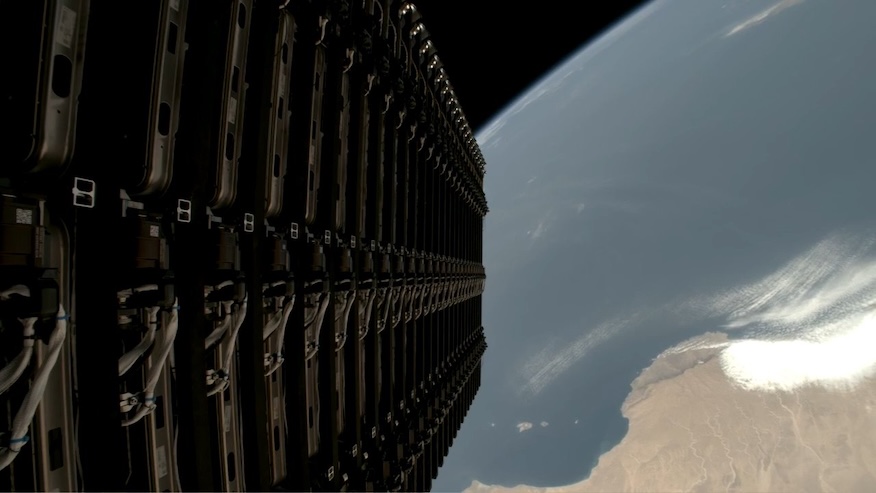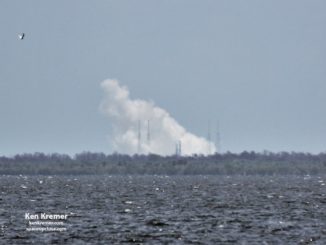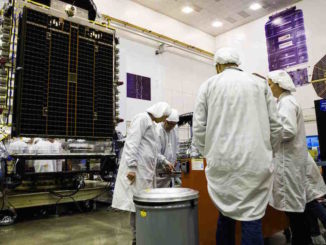
Update July 26, 7 a.m. EDT: SpaceX confirms deployment of the 28 Starlink satellites.
SpaceX launched a Falcon 9 rocket from Cape Canaveral Space Force Station in the predawn hours of Saturday with its latest batch of Starlink satellites. The flight came about a day and a half after the internet constellation experienced a global outage for more than two hours.
The Starlink 10-26 mission will place another 28 satellites into low Earth orbit. According to expert orbital tracker and astronomer Jonathan McDowell, there are currently more than 8,000 Starlink satellites on orbit.
SpaceX executed liftoff from Space Launch Complex 40 at 5:01 a.m. EDT (0901 UTC). The mission is the 91st Falcon 9 launch of the year so far.
The 45th Weather Squadron forecast a 95 percent chance for favorable weather during the launch window. Meteorologists said there was just “the very outside of chance of an isolated cumulus (cloud) over the pad throughout the weekend.”
The Falcon 9 first stage booster used on this mission had the tail number B1078 and launched for a 22nd time. Its previous missions include Crew-6, USSF-124 and 17 previous batches of Starlink satellites.
A little more than eight minutes after liftoff, B1078 landed on the droneship, ‘A Shortfall of Gravitas.’ This was the 119th touchdown on this vessel and the 480th booster landing to date for SpaceX.
Starlink ups and downs
The past week has been a mixed bag for the Starlink program with some key wins and a temporary stumble. Saturday, July 19, saw the successful launch of 24 Starlink satellites on a Falcon 9 rocket from Vandenberg Space Force Base. That pushed the constellation above 8,000 satellites on orbit for the fist time.
That was followed on Wednesday, July 23, by U.S. cellular company T-Mobile announcing the full rollout of what it calls “T-Satellite.” This is the execution of direct to cell capabilities for cellular users across the United States. T-Mobile CEO Mike Sievert said on social media that the service is being made available to Verizon and AT&T customers as well.
Falcon 9 launches 24 @Starlink satellites from California pic.twitter.com/57IRErhmHN
— SpaceX (@SpaceX) July 19, 2025
Then on Thursday, July 24, Starlink users around the world experienced a rare full network outage of the Starlink internet service beginning around 4 p.m. EDT (2000 UTC). SpaceX founder Elon Musk took to his social media site, X, to apologize for the outage.
“SpaceX will remedy root cause to ensure it doesn’t happen again,” Musk wrote.
About 2.5 hours after acknowledging the outage, Michael Nicolls, the vice president of Starlink Engineering at SpaceX, posted on his X account to say that Starlink had “mostly recovered from the network outage.”
“The outage was due to failure of key internal software services that operate the core network,” Nicholls wrote. “We apologize for the temporary disruption in our service; we are deeply committed to providing a highly reliable network, and will fully root cause this issue and ensure it does not occur again.”
About 1.5 hours after that statement, the Starlink X account stated that the problem was corrected.
“The network issue has been resolved, and Starlink service has been restored,” SpaceX said via the Starlink account. “We understand how important connectivity is and apologize for the disruption.”
The first 60 operational Starlink satellites launched in May 2019 from Cape Canaveral. Since then there have been more than 280 launches of Starlink satellites.
SpaceX began public beta testing of Starlink in the United States in 2020. It has since expanded coverage to 115 countries with Sri Lanka and Chad being the most recent additions in July 2025.



